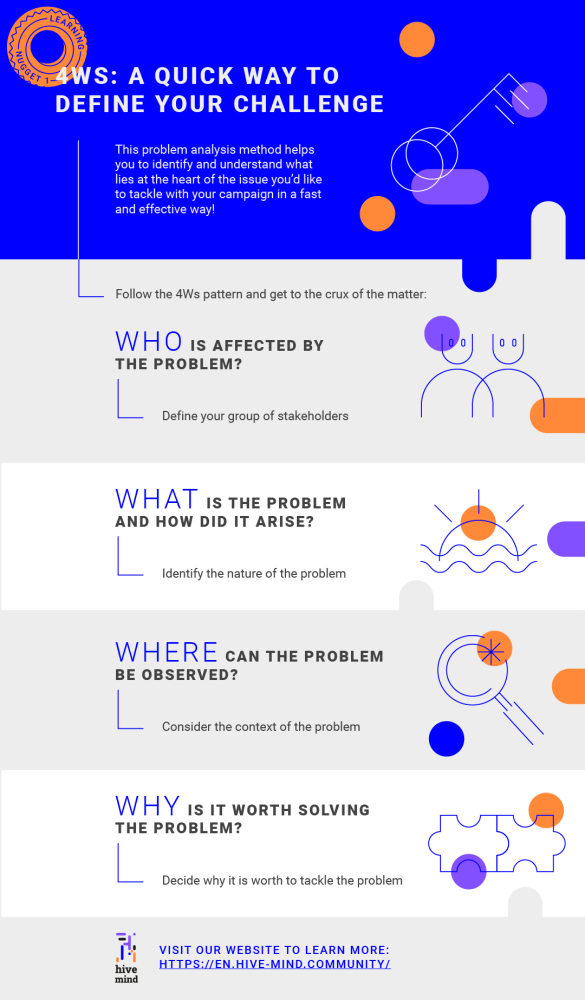The 4Ws tool – with four basic questions: Who? What? Where? Why? – helps you to identify your problem and define the challenge that needs to be tackled. You should use it at the beginning of your campaign design in order to get a clear understanding of the problem and repeat it whenever needed!
WHO?
The "Who" part helps us with comprehending and categorizing who is affected by the problem: directly and indirectly.
Who is facing the problem and who would benefit from its future solution?
Who are the stake holders?
Is it possible to narrow them down to a segment of the population?
What do you know about this group?
What part of the world are the affected persons from?
What is their age bracket?
What are their personalities?
What are their possible likes and dislikes?
Are there any stand-out motivations for the affected persons?
For what reason do these people have found themselves in this situation?
WHAT?
The “What" part helps us with understanding and identifying the nature of the problem. With this question we uncover exactly what the problem is and what kind of task is involved in its resolving.
What is the nature of the problem? Can you explain it in a simple way?
How do you know it's a problem?
What is the evidence supporting the problem?
Is the problem openly stated or implied?
What needs to be done to solve the problem?
WHERE?
The “Where" part answers the questions about the situation and location of the problem. It makes us think about the context and/or the environment the problem has arisen in.
In which context or situation do people experience the problem?
Where have you observed the problem?
Where does the dissatisfaction people experience come from?
Are the occurrences of the problem in this location stable or seasonal?
WHY?
The “Why" part illustrates the reason why the problem is worth solving. It also tells us about the benefits for the stakeholders of the problem.
Why does it matter?
Is it an acute problem for the people experiencing it? How acute is it?
Do you believe solving the problem can make a difference? What difference can it make?
Is the problem recent or was it caused by some new circumstances?
If we handle this problem, will it help the stakeholders have a better experience?
Do we proceed to offer a solution to the problem or should we wait for other triggers?
Once you’ve answered these questions, you gain a clearer focus and can frame a problem statement.
The “4 Ws” is a quick and easy form of problem analysis.
✅ Learn more about it and more in-depth problem analysis tools, such as the “problem tree” or the “iceberg analysis”, in the free, self-paced course: “Online Campaigning – Advanced”.
Check it out today! Here's a link to Part One of the course:
Do you like this article? Would you like to take it home?
Here's a free, downloadable infographic summarising what you've just read:

